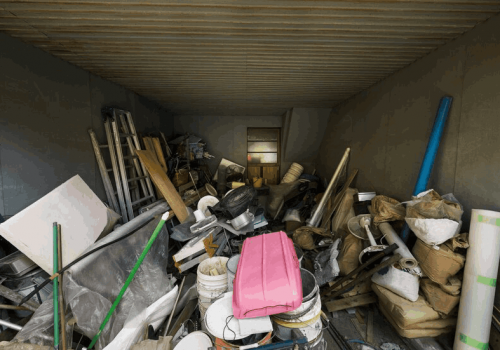When tackling a junk removal project, dealing with hazardous materials requires extra caution and expertise. Hazardous materials, such as chemicals, batteries, and certain types of electronics, pose significant risks to health and the environment if not handled properly. Ignoring these risks can lead to serious consequences, including legal liabilities and environmental damage. Understanding the right procedures for managing these substances is crucial to ensuring both safety and compliance with regulations. In this guide, we will explore essential practices for handling hazardous materials during junk removal. From identifying potentially dangerous items to employing safe disposal methods, we’ll provide practical tips to help you navigate these challenges effectively. Whether you’re a homeowner tackling a DIY project or a professional junk removal service, this information will equip you with the knowledge needed to manage hazardous materials responsibly and efficiently.
When undertaking junk removal, whether for residential cleanouts, office clear-outs, or construction site clean-ups, understanding and managing hazardous materials is crucial for both safety and compliance. Hazardous materials, often found in everyday items and construction debris, require special handling to prevent health risks and environmental damage. Here, we delve into eight common hazardous materials you might encounter during junk removal, outlining their risks and best practices for safe management.
Asbestos is a naturally occurring mineral once widely used in construction for its fire-resistant properties. However, its fibers, when inhaled, can cause serious lung diseases, including asbestosis and mesothelioma. Asbestos is commonly found in older buildings in materials like insulation, roofing shingles, and floor tiles. Proper removal and disposal require professional services trained and certified in handling asbestos to avoid the risk of fiber release.

Paint Lead-based paint was commonly used in homes built before 1978. Lead dust and chips from deteriorating paint pose serious health risks, especially to children, pregnant women, and pets. Exposure can lead to developmental issues and neurological damage. When removing junk containing lead-based paint, it’s essential to use protective gear, follow local regulations for disposal, and seek professional help if necessary to ensure safe handling and removal.
Fluorescent light bulbs contain mercury, a toxic heavy metal. When broken, mercury can be released into the environment, posing health risks. Proper disposal of fluorescent bulbs involves careful handling to prevent breakage and using recycling programs designed to handle mercury-containing items. Many municipalities have specific drop-off locations or recycling programs for these bulbs.
Batteries, especially rechargeable and older types like lead-acid batteries, contain various hazardous chemicals and heavy metals such as lead, cadmium, and nickel. These materials can be harmful to both humans and the environment if not disposed of correctly. Recycling programs and designated drop-off centers should be used to safely handle and dispose of batteries.
Electronic waste, or e-waste, includes items like computers, televisions, and other devices. These often contain hazardous materials such as lead, cadmium, and brominated flame retardants. E-waste should not be disposed of with regular trash. Instead, use certified e-waste recyclers who can safely dismantle and process these materials in an environmentally friendly manner.
When dealing with junk removal, it’s essential to recognize and properly manage hazardous materials to ensure safety and environmental protection. Hazardous materials are substances that can pose significant risks to human health and the environment if not handled correctly. These materials are often found in everyday items and can be especially prevalent in older homes, workplaces, and construction sites. Here’s a comprehensive guide to identifying eight common hazardous materials you may encounter:
Asbestos is a naturally occurring mineral fiber that was widely used in construction and manufacturing due to its fire-resistant properties and strength. However, asbestos poses severe health risks when its fibers become airborne and are inhaled. Long-term exposure to asbestos can lead to serious respiratory diseases, including asbestosis, lung cancer, and mesothelioma. Common sources of asbestos include old insulation materials, roofing shingles, and floor tiles. Proper handling and disposal of asbestos-containing materials require specialized procedures to prevent fiber release and exposure.
Lead is a toxic heavy metal that can be found in various materials, including lead-based paint, plumbing pipes, and batteries. Lead exposure is particularly dangerous for children and pregnant women, as it can cause developmental issues, neurological damage, and other health problems. In older buildings, lead-based paint is a common concern, and plumbing systems made from lead pipes can also be a source of contamination. Safe practices involve regular testing of environments and materials, proper abatement techniques, and following regulations for lead-safe work practices.
Mercury is a heavy metal that exists in several forms, including elemental mercury, inorganic mercury compounds, and organic mercury compounds. It is commonly found in thermometers, certain types of light bulbs, and some batteries. Mercury exposure can lead to severe health issues, including neurological damage, kidney damage, and respiratory problems. Due to its toxicity, handling mercury requires careful procedures, including the use of protective equipment and proper disposal methods to prevent environmental contamination.
Solvents, such as acetone, trichloroethylene, and others, are chemicals used to dissolve or dilute other substances. They are commonly used in cleaning products, paints, and industrial processes. Many solvents are volatile organic compounds (VOCs) that can release harmful fumes into the air, posing respiratory and environmental hazards. Long-term exposure can lead to health issues such as headaches, dizziness, and liver damage. Proper ventilation, personal protective equipment, and safe storage practices are essential for minimizing exposure risks.
Pesticides are chemicals used to manage pests, including insects, weeds, and fungi. They are commonly found in agricultural settings, gardens, and even household products. Many pesticides contain substances that can be harmful to humans and wildlife if not used correctly. Health risks associated with pesticides include skin irritation, respiratory problems, and long-term effects such as cancer. Using pesticides according to label instructions, employing integrated pest management strategies, and wearing appropriate protective gear can help mitigate these risks.
Handling hazardous materials requires stringent safety measures to prevent accidents and protect personnel. Using the right equipment and gear is crucial to ensuring a safe working environment.
Handling hazardous materials safely is crucial for any junk removal project, ensuring both your safety and the environment’s protection. By understanding proper disposal methods and adhering to local regulations, you can manage these materials responsibly. At JUNKAHAULICS – Raleigh, our team is trained to handle hazardous waste with the utmost care, following all necessary protocols to ensure a safe and efficient removal process.
If you have hazardous materials that need to be dealt with or require any assistance with junk removal, don’t hesitate to reach out to us. Contact JUNKAHAULICS – Raleigh at 4801 Glenwood Ave, Suite 200, Raleigh, NC 27612, or call (910) 403-3616. Our experts are here to provide you with reliable service and answer any questions you may have.


JUNKAHAULICS